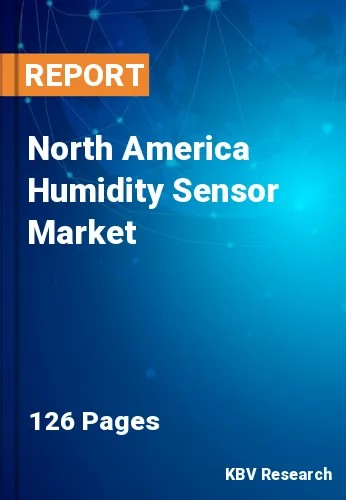Chapter 1. Market Scope & Methodology
1.1 Market Definition
1.2 Objectives
1.3 Market Scope
1.4 Segmentation
1.4.1 North America Humidity Sensor Market, by Type
1.4.2 North America Humidity Sensor Market, by End User
1.4.3 North America Humidity Sensor Market, by Country
1.5 Methodology for the research
Chapter 2. Market at a Glance
2.1 Key Highlights
Chapter 3. Market Overview
3.1 Introduction
3.1.1 Overview
3.1.1.1 Market Composition and Scenario
3.2 Key Factors Impacting the Market
3.2.1 Market Drivers
3.2.2 Market Restraints
3.2.3 Market Opportunities
3.2.4 Market Challenges
Chapter 4. Competition Analysis - Global
4.1 Market Share Analysis, 2022
4.2 Porter’s Five Forces Analysis
Chapter 5. North America Humidity Sensor Market by Type
5.1 North America Absolute Market by Country
5.2 North America Relative Market by Country
5.3 North America Others Market by Country
Chapter 6. North America Humidity Sensor Market by End User
6.1 North America Automotive Market by Country
6.2 North America Pharmaceutical & Healthcare Market by Country
6.3 North America Industrial Market by Country
6.4 North America Food & Beverages Market by Country
6.5 North America Building Automation & Domestic Appliances Market by Country
6.6 North America Environmental & Agriculture Market by Country
6.7 North America Others Market by Country
Chapter 7. North America Humidity Sensor Market by Country
7.1 US Humidity Sensor Market
7.1.1 US Humidity Sensor Market by Type
7.1.2 US Humidity Sensor Market by End User
7.2 Canada Humidity Sensor Market
7.2.1 Canada Humidity Sensor Market by Type
7.2.2 Canada Humidity Sensor Market by End User
7.3 Mexico Humidity Sensor Market
7.3.1 Mexico Humidity Sensor Market by Type
7.3.2 Mexico Humidity Sensor Market by End User
7.4 Rest of North America Humidity Sensor Market
7.4.1 Rest of North America Humidity Sensor Market by Type
7.4.2 Rest of North America Humidity Sensor Market by End User
Chapter 8. Company Profiles
8.1 General Electric Company
8.1.1 Company Overview
8.1.2 Financial Analysis
8.1.3 Segmental and Regional Analysis
8.1.4 Research & Development Expense
8.1.5 SWOT Analysis
8.2 Sensirion AG
8.2.1 Company Overview
8.2.2 Financial Analysis
8.2.3 Regional Analysis
8.2.4 Research & Development Expenses
8.2.5 Recent strategies and developments:
8.2.5.1 Partnerships, Collaborations, and Agreements:
8.2.5.2 Product Launches and Product Expansions:
8.2.6 SWOT Analysis
8.3 TE Connectivity Ltd.
8.3.1 Company Overview
8.3.2 Financial Analysis
8.3.3 Segmental and Regional Analysis
8.3.4 Research & Development Expense
8.3.5 Recent strategies and developments:
8.3.5.1 Acquisition and Mergers:
8.3.6 SWOT Analysis
8.4 Honeywell International, Inc.
8.4.1 Company Overview
8.4.2 Financial Analysis
8.4.3 Segmental and Regional Analysis
8.4.4 Research & Development Expenses
8.4.5 SWOT Analysis
8.5 Continental AG
8.5.1 Company Overview
8.5.2 Financial Analysis
8.5.3 Segmental and Regional Analysis
8.5.4 Research & Development Expense
8.5.5 SWOT Analysis
8.6 Infineon Technologies AG
8.6.1 Company Overview
8.6.2 Financial Analysis
8.6.3 Segmental and Regional Analysis
8.6.4 Research & Development Expense
8.6.5 Recent strategies and developments:
8.6.5.1 Product Launches and Product Expansions:
8.6.6 SWOT Analysis
8.7 Robert Bosch GmbH
8.7.1 Company Overview
8.7.2 Financial Analysis
8.7.3 Segmental and Regional Analysis
8.7.4 Research & Development Expense
8.7.5 SWOT Analysis
8.8 Sensata Technologies Holdings PLC
8.8.1 Company Overview
8.8.2 Financial Analysis
8.8.3 Segmental and Regional Analysis
8.8.4 Research & Development Expense
8.8.5 SWOT Analysis
8.9 Omron Corporation
8.9.1 Company Overview
8.9.2 Financial Analysis
8.9.3 Segmental and Regional Analysis
8.9.4 Research & Development Expenses
8.9.5 SWOT Analysis
8.10. Hitachi, Ltd.
8.10.1 Company Overview
8.10.2 Financial Analysis
8.10.3 Segmental and Regional Analysis
8.10.4 Research & Development Expenses
8.10.5 SWOT Analysis

